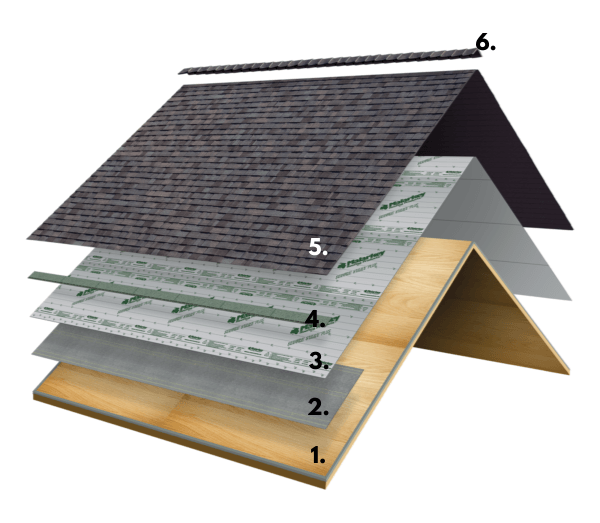When it comes to roofing, one of the questions homeowners often have is, “How many layers of shingles should be on a roof?” Understanding the recommended number of shingle layers is essential for maintaining the integrity and longevity of your roof. In this article, we will explore the factors that influence the number of shingle layers and why it matters.

Single Layer vs. Multiple Layers of Shingles
Roofing shingles are the outermost layer of your roof, providing protection from the elements. The number of layers of shingles on a roof can vary from one to multiple layers. Let’s delve into the differences between single and multiple layers of shingles:
Single Layer of Shingles:
- A single layer of shingles means that there is only one layer of roofing shingles installed on the roof deck.
- It is the preferred method for a roof installation, as it ensures proper weight distribution and uniformity.
- A single layer of shingles is the most common and recommended practice for a roof.
- Removing the old shingles before installing a new layer is essential for inspecting and repairing the roof deck, preventing moisture buildup, and achieving a level surface for the new shingles.
Multiple Layers of Shingles:
- Multiple layers of shingles mean that two or more layers of roofing shingles are installed on top of one another.
- This may occur when new shingles are installed over existing ones without removing the old layer.
- It can add significant weight to the roof, potentially exceeding the recommended load-bearing capacity.
- Multiple layers can lead to uneven surfaces, which can affect the appearance and performance of the new shingles.
Factors Influencing the Number of Shingle Layers
Several factors influence the number of shingle layers on a roof:
- Local Building Codes: Local building codes and regulations play a significant role in determining the number of shingle layers allowed. In some areas, it may be permitted to have two layers of shingles, while others strictly enforce a single layer rule.
- Roof Condition: The condition of the existing roof deck and shingles is a crucial consideration. If the old shingles and roof deck are in good condition, it may be feasible to install a new layer of shingles. However, if there is extensive damage or moisture-related issues, removing the old shingles becomes necessary.
- Weight-Bearing Capacity: The structural integrity of your roof and its weight-bearing capacity are vital. Adding multiple layers of shingles increases the weight load on the roof, potentially exceeding its capacity, which can lead to structural issues.
Why It Matters
Understanding the recommended number of shingle layers is essential for several reasons:
- Structural Integrity: Exceeding the weight-bearing capacity of your roof can compromise its structural integrity, leading to sagging, leaks, and other problems.
- Warranty Coverage: Roofing material manufacturers often provide warranties that are contingent on proper installation. Installing more layers than recommended may void the warranty.
- Energy Efficiency: Multiple layers of shingles can affect the energy efficiency of your home by trapping heat and making it harder to regulate indoor temperatures.
- Aesthetic Concerns: Installing new shingles over old ones can result in an uneven appearance, affecting your home’s curb appeal.
Conclusion
Maintaining the integrity and longevity of your roof is crucial for the protection of your home. When considering how many layers of shingles should be on a roof, it’s essential to adhere to local building codes, evaluate the condition of your existing roof, and consider the weight-bearing capacity of your roof. While it may be tempting to save time and money by adding a new layer of shingles over the old, adhering to recommended practices and ensuring a single layer installation is typically the best approach for a long-lasting, trouble-free roof.



Leave a Reply